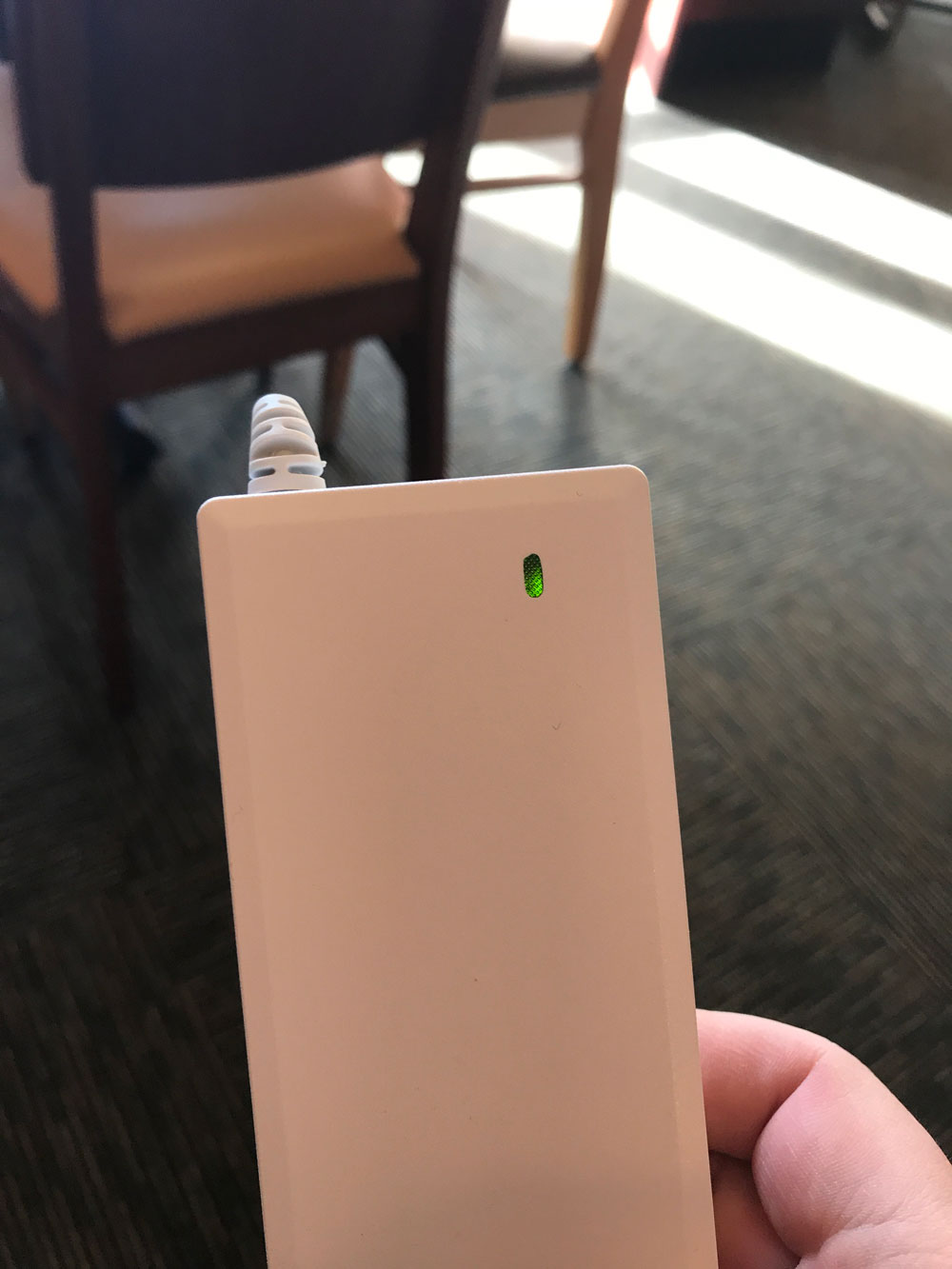“If my old iPad could talk, it might ask me what has changed,” he wrote. “If it could feel indignant, it might suggest that it isn’t the problem, and that everyone and everything else is.”
I’d like to invert John’s not-so-uncommon problem and highlight another example of technological waste having to do with an Apple device. Specifically, the MagSafe connector. When introduced in 2006, it was a uniquely Apple invention, one that held onto your laptop tightly, but was able to let go if needed.
This was a magical idea, one of Apple’s best, and something that people still think Apple should continue to make, even as it’s started to retire it in favor of an honest-to-God standard, USB-C.
But the same traits that make MagSafe magical—that it was unique to Apple, that it was unlike anything else on the market—also make it incredibly wasteful. Here’s the issue, if I could lay it out delicately here: Apple has not let other companies make this connector, which is proprietary, meaning that Apple is the only place you can legally get it. That’s bad enough, but the design of the device is also a problem; the most fragile part of the cable is the part that plugs into your laptop, and it can’t be easily removed from the AC adaptor section, which frequently hangs out on the ground or off an outlet.
The white cable, due to the high temperatures it carries and the fact that it, also, is on the ground, often yellows as well, and soon it frays. This thin cable deals with a lot of wear and tear—and after half a year, you’re stuck buying another device from Apple. For $80.
This is a way Apple gets rich off of your use of its products. They’ve created a product that’s susceptible to breakage, proprietary, expensive, and absolutely necessary if you wanted to use their product. And you were stuck with it.
Well, until recently. In the past year or so, random Chinese manufacturers have finally started making their own unlicensed takes on the cable, some of which cost as little as $20. Apple fans would speak lowly of these cables as potential fire threats, but honestly, the original chargers are, too. Apple's own chargers have melted on me. So, I figured I could live with the risk. I bought one. It looks cheap and non-Apple-like, like a brick sold by any other manufacturer. But you know what? It’s great at what it does, and it costs about a quarter of the price.

Plus, it has some design benefits that Apple thinks it’s too good for, like strain relief, also known as the ridges frequently used at the end of electronics cables. A Reddit user who claimed to have ties to Apple suggested that the issue with Apple’s cables was a side effect of the unusual power that the company’s industrial design department has in comparison to the rest of the company:
Now it just so happens that the Industrial Design department HATES how a strain relief looks on a power adapter. They would much prefer to have a nice clean transition between the cable and the plug. Aesthetically, this does look nicer, but from an engineering point of view, it's pretty much committing reliability suicide. Because there is no strain relief, the cables fail at a very high rate because they get bent at very harsh angles. I'm sure that the Engineering division gave every reason in the world why a strain relief should be on an adapter cable, and Customer Service said how bad the customer experience would be if tons of adapters failed, but if industrial design doesn't like a strain relief, guess what, it gets removed.
Apple’s industrial design department has a lot of power because it’s good, but this specific failure, encouraged for years because of the company’s unwillingness to bend, has led to the creation of third party products that are designed to fix Apple’s own industrial design failures.
This has cost Apple lots of money over the years, including leading to a class-action lawsuit and, later, a replacement program. But this didn’t actually solve the problem. Really, it just tried to solve it with money. Apple has a decade of products with MagSafe that either have to be replaced by another product just as susceptible to wear-and-tear problem, or they have to essentially counterfeit the interface. Perhaps Apple should make the MagSafe cords modular instead—and save both consumers and the environment a lot of headaches.
I admire Apple’s products greatly, but this is environmentally wasteful—and something eco-focused groups should really draw attention to. Apple needs to stop selling $80 doorstops.
From now on, I’m taking my chances with the $20 cables.
(Top photo: Neil Turner/Flickr; Bottom photo: Me)
:format(jpeg)/2018/02/0206_magsafe.jpg)
/2018/02/0206_magsafe.jpg)
/uploads/ernie_crop.jpg)